Research axes
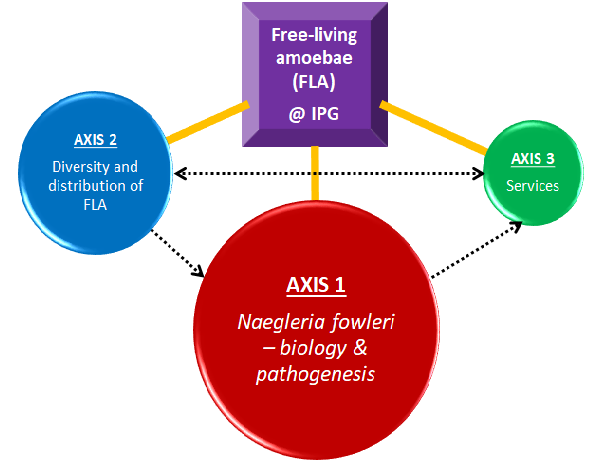
In France, the first fatal case of infection with N. fowleri was reported in a geothermal bath in Guadeloupe (French West Indies) in 2008.
Since then, we developed at the Institut Pasteur de Guadeloupe (IPG) 3 major research axes:
- Axis 1: Naegleria fowleri biology and pathogenesis.
- Axis 2: Diversity and distribution of FLA.
- Axis 3: Services.
If you want to know more or join us, please contact: IMarcelino/AT\pasteur-guadeloupe.fr
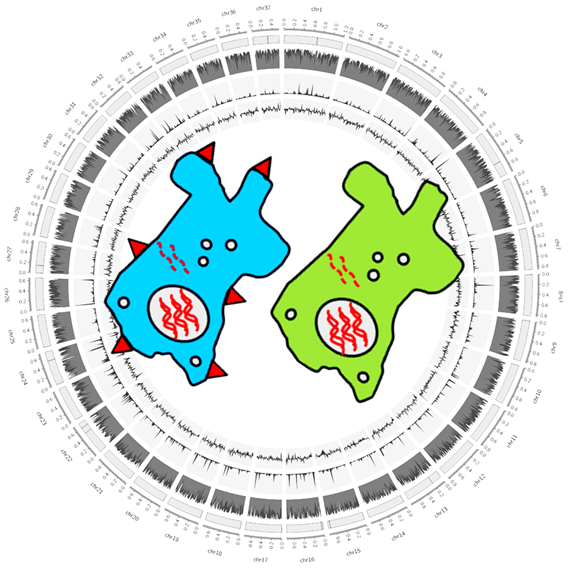
Axis 1. Naegleria fowleri biology and pathogenesis
Members of the Naegleria genus belong to the major eukaryotic lineage Heterolobosea. Over 50 recognized species detected, N. fowleri (also called brain-eating amoeba) is the only one being pathogenic to humans, causing a rare but fulminant primary amoebic meningoencephalitis (PAM).
PAM affects mainly healthy children or young adults (Sarink et al. 2021). The infection occurs when contaminated water enters the nose; N. fowleri (specially trophozoites) follows the olfactory nerve to the brain through the cribriform plate. There, it induces phagocytosis of brain material, provoking tissue damage and hemorrhagic necrosis causing a fatal brain infection. The disease progresses rapidly leading to death within 7-12 days (Moseman 2020). Combined with its low incidence (Trabelsi et al. 2012; Siddiqui et al. 2016), early diagnosis is difficult (the PAM symptoms closely resembled bacterial meningitis (Jahangeer et al. 2020); the link with Naegleria is usually made post-mortem by microscopic examination of the cerebral spinal fluid or by quantitative PCR.
In recent years, an increased number of PAM cases have been reported worldwide, particularly in temperate regions and developing countries; this is probably due to global warming, global overpopulation and increased industrial activities (Kemble et al., 2012; Siddiqui et al., 2016; Maciver et al., 2020). Despite successful treatment options with miltefosine and other antimicrobial medication (Debnath 2021), the mortality rate is still significant, suggesting the need to find effective therapies (Khan et al., 2021).
To develop improved diagnostic tools and/or provide an early and effective treatment against N. fowleri infection, it is necessary to improve the knowledge on the biology and the pathogenesis of this amoeba.
Naegleria fowleri is a remarkable microorganism:
It exists in 3 distinct forms,
It survives in different ecosystems (water, soil, air), and occasionally infects humans and animals
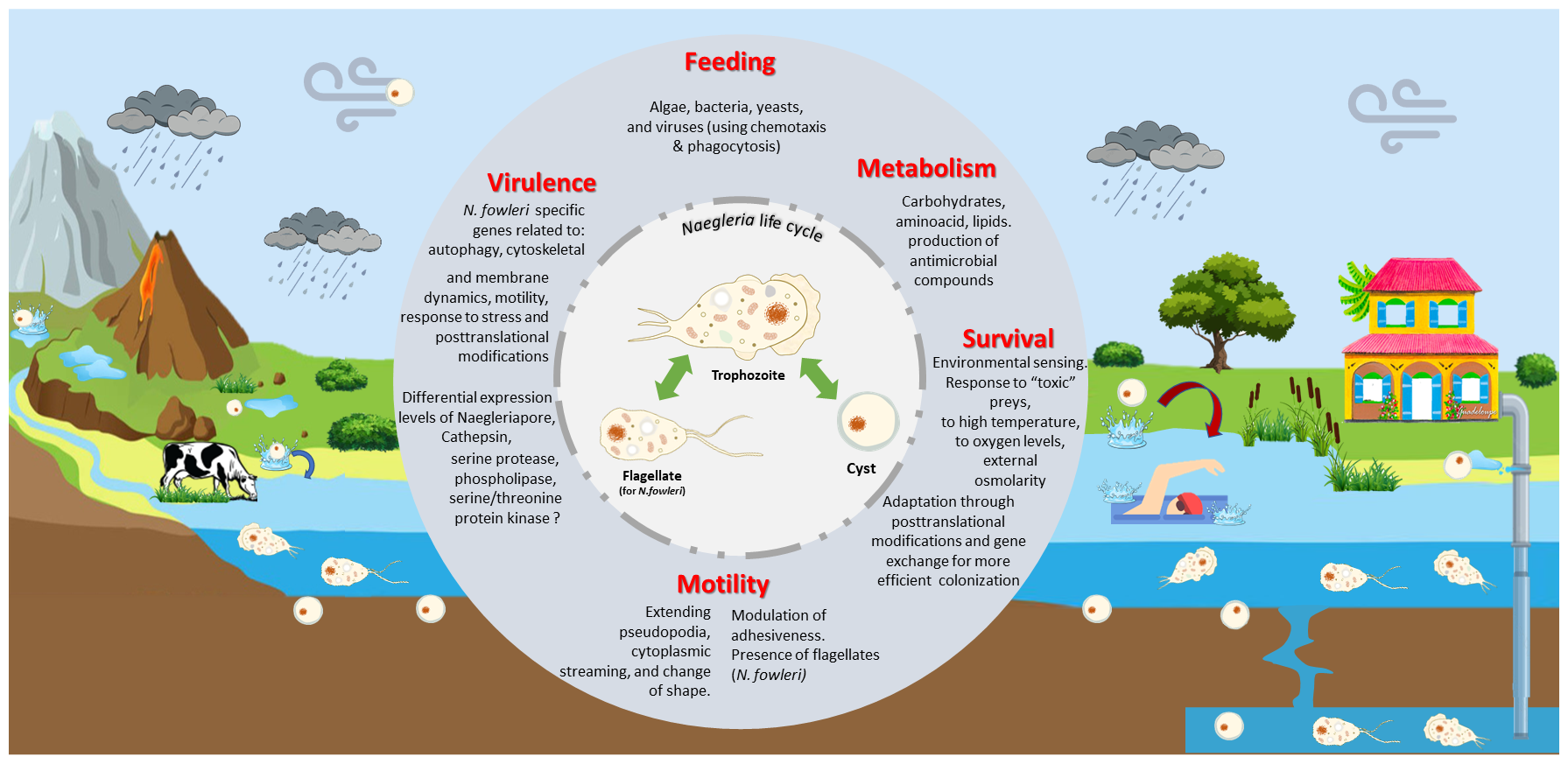
It can use different sources of nutrients in vivo and in vitro,
It can induce asymptomatic infections in humans,
It exists under different genotypes in the world,
and it can harbor pathogenic microorganisms, in particular bacteria.
It has also been proved that the degree of virulence of N. fowleri trophozoites can vary depending on the strain and the culture conditions.
These observations raise many questions such as: Which are the genes associated to virulence? Which gene /proteins are expressed in virulent and “less-virulent” strains? Are N. fowleri strains isolated from the environment genetically different from isolated from humans?
Our Amoebae Team aims to answer to these questions using genomics, transcriptomics and bioinformatics.
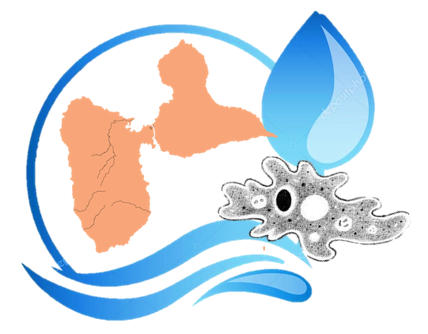
Axis 2. FLA diversity and distribution
Free-living amoebae (FLA) can be found all around the word in natural or man-made environments, including wastewater treatment plants, drinking water networks, tap water, hospital water networks, hot springs, swimming pools, rivers, deserts, wet soils, sediments and soil from agricultural and mining sites. Although the incidence of human infections by pathogenic FLA (Acanthamoeba spp., Balamuthia mandrillaris, Sappinia pedata and Naegleria fowleri) is generally low, new cases are being constantly reported worldwide.
In Guadeloupe, after a 9-year-old boy died of PAM in 2008 after swimming in the Dolé geothermal bath of the French West Indies Guadeloupe Island (Nicolas et al. 2010), an investigation on the occurrence and distribution of Naegleria in warm waters was performed in 2011-2012 (Moussa et al. 2013). This survey demonstrated that thermophilic amoebae (in particular Naegleria sp) were often detected (at low concentrations in most) of the warm waters located around the Soufriere volcano. Surprisingly, the baths which appeared to be the most contaminated were not always the dirtiest ones. Further studies performed by our team (Moussa et al. 2015) revealed that the soil near the ponds contains amoebae and thus causes contamination of hot baths. The amoebae would therefore be carried away by the runoff of the rains on the ground, and then brought back towards the bed of the river and carried by the current of hot water towards the basins (Moussa et al. 2015).
In 2020, our team published a study on the diversity and distribution of FLA in the soil of Guadeloupe (Reynaud et al. 2020) using metabarcoding. The results highlighted the presence of several genera of amoebae such as Vermamoeba and Naegleria in a predominant manner. Vermamoeba vermiformis, Acanthamoeba and Naegleria are the most common amoebae in the world (Geisen et al. 2018). This pattern of predominance has also been observed in Guadeloupe.
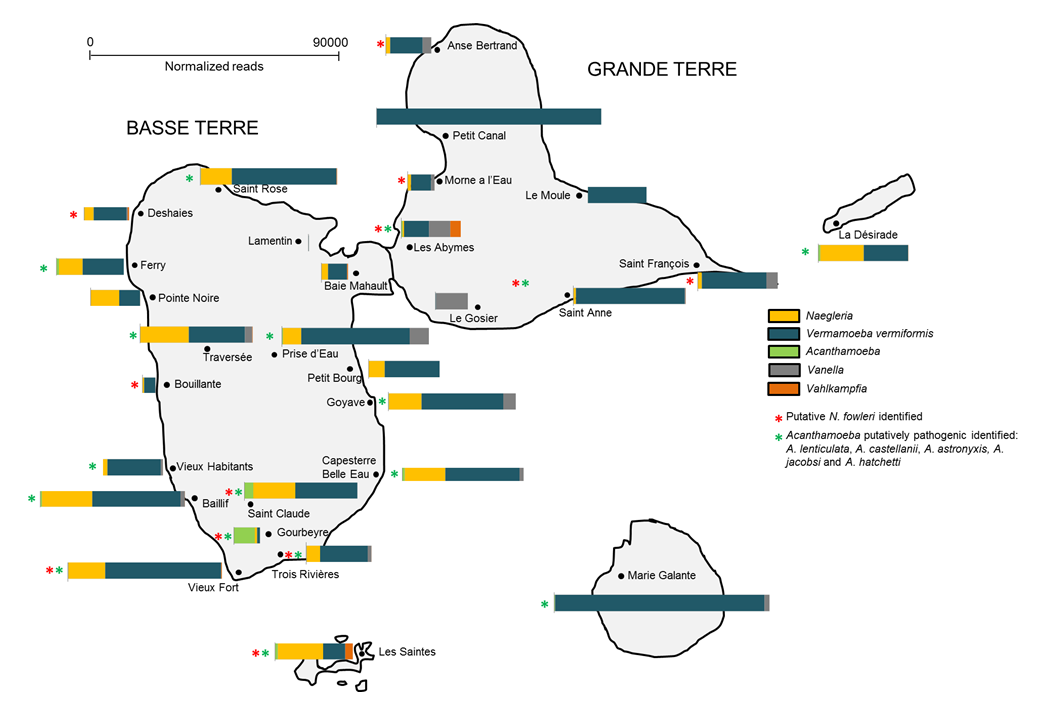
Recent preliminary analyzes carried out by our team showed that (i) FLA can be detected in tap water in Guadeloupe and that (ii) Naegleria sp isolated from water can harbor a wide range of bacteria, including some known to be pathogenic to humans. We are now interested in assessing the diversity of FLA (and their bacteriome) in the different catchment, storage and distribution areas of drinking water in Guadeloupe.
Our Amoebae Team aims to achieve these goals by using 18S and 16S metabarcoding (and Bioinformatics), but also microscopy (SEM, TEM, FISH), in collaboration with Olivier Gros @ Université des Antilles.

Axis 3. Services
This axis is not directly associated with a fundamental research project, but with support to the human health service (ARS Guadeloupe, ANSES - Nancy, CHU Guadeloupe) for the detection and identification of amoebae in Guadeloupe (meningitis, keratitis, or others).
After the first PAM case in Guadeloupe, the Regional Health Agency of Guadeloupe (ARS) implemented bath monitoring and treatment measures to better manage the risk posed by amoebae. The FLA analyses (mainly targeting Naegleria sp.) are conducted 3-4 times / year in the most frequented bath in Guadeloupe, as requested by the ARS.
